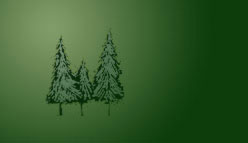The Understorey Network promotes the protection of existing native
vegetation and the use of local native understorey in
vegetation,through field days and workshops, growing of plants from
seed and the maintenance of a plants database.
Groups and Individuals are assisted with expertise sharing through a support network.
What you can do to support the network is to fence or plant understorey on your land, grow
plants for yourself or others,or collect seed etc.
Further information;
E-mail UNDERSTOREY NETWORK
The understorey is likely to be made up of shrubs, tree seedlings, low trees, grasses, other herbs, vines, ferns and mosses.
A hectare of natural woodland may contain 3-4 species of tree but perhaps in excess of 30
understorey species.
Serious tree decline is widely publicised , while understorey species are disappearing at an
even faster rate yet is often overlooked.
Understorey provides shelter for young livestock,is vital to beekeepers, Improves soil fertility,
makes a more pleasant environment, attracts small song birds, assists natural pest control,
provides emergency feed for stock, stabilises soil, provides a fuel source.
Important as the understorey is, if improperly managed it can be a nuisance and reduce rural
incomes.
WHAT YOU CAN DO:
Determine conservation values BEFORE any land clearing or construction commences on your
property.
Control weeds, rabbits & other vermin.
Protect Bushland for future generations by writing a:
CONSERVATION COVENANT on the land's title.
Encourage natural regeneration.
Remove weeds manually, reduce the use of herbicides.
Fence off areas.
Plant LOCAL understorey.
Sow seeds into prepared ground on site.
Do not overburn.
Reduce winds.
Join
Tasmanian Understorey Network, or ...GREENING AUSTRALIA
Animals of the Soil & Litter Layer
Immediately above the topsoil is a layer of organic debris from plants & animals known as
litter.
This layer is important to soil formation, and contains great numbers of tiny animals. These
animals over centuries together with dead plants have broken down and created byproducts,
which in turn have created a rich humus. If soil organisms, plants and litter are removed,
nutrient recycling is interrupted, the soil structure is damaged and long term fertility is reduced.
At least 1/3rd of Australia's native mammal species depend directly upon this layer for food and
shelter.
The moist litter also provides a home and feeding space for several frog species.
Ants & Other Species
There are at least 110,000 species of native Australian insects.
Many of these need native vegetation as part of their lifecycle. Any changes to native vegetation
will affect the insects. Careful choices of native plants can improve habitat for native insect
species which in turn will improve the number of insect eating birds and other animals.
Ants are important pest controllers for trees.
Some ants live entirely in the ground layer, their role is to decompose organic matter.
Threatened Species
Most of Australia's GROUND DWELLING MAMMALS depend
on food from the litter layer, including dunnarts, antechinuses,
and the planigales plus bandicoots.
Shade is essential for the survival of these species in the drier
areas. In cold climates, if exposed to the winter winds they need
up to about twice their usual food to keep warm. Shelter from
trees & other plants reduces heat loss.
About a third of Australia's mammals live in trees including bats, possums, gliders, koalas,2
species of tree kangaroos and several species of native rodent. Some TREE DWELLING
MAMMALS help pollinate certain trees and shrubs through pollen sticking on their fur or from
their tongue as they feed .
ENCOURAGING WILDLIFE
Wildlife on farms can protect soil fertility and maintain the health of shade trees . Unproductive
areas can be valuable for wildlife.
A strategy can be developed to include :
FENCING OFF REMNANTS of the original native vegetation
INCLUSION OF APPROPRIATE DIVERSITY of tree & shrub species
CONSERVATION OF NATIVE UNDERSTOREY
LEAVING OF OLD DEAD TREES to provide nest hollows for birds & mammals
ERECTING NEST BOXES IN OTHER TREES
DEVELOPING FARM DAMS AS SHARED HABITAT for wildlife & stock
PLANTING CORRIDORS OF TREES
ENSURING THAT NATIVE VEGETATION ON ROADSIDES,STOCK ROUTES &
STREAMSIDES IS MANAGED PROPERLY.
Many species are rarely sighted e.g. the hastings river mouse, the narrow nosed planigale , the
parma wallaby and the mountain possum were all considered extinct , until recently
rediscovered.
Landholders can help if they keep a list of animals seen on their land, plus any unknown dead
animals should be collected or photographed.
DID YOU KNOW? - over 50 species of Australian Animals and nearly 70 species of
Australian plants are extinct.
Further,about 280 species of native animals and over 1160 species of native plants may become extinct in the near future.
In Australia , the Federal Government's Natural Heritage Trust is helping conserve and protect
threatened species through joint programmes such as the World Wide Fund for Nature
and the Threatened Species Network.
|




